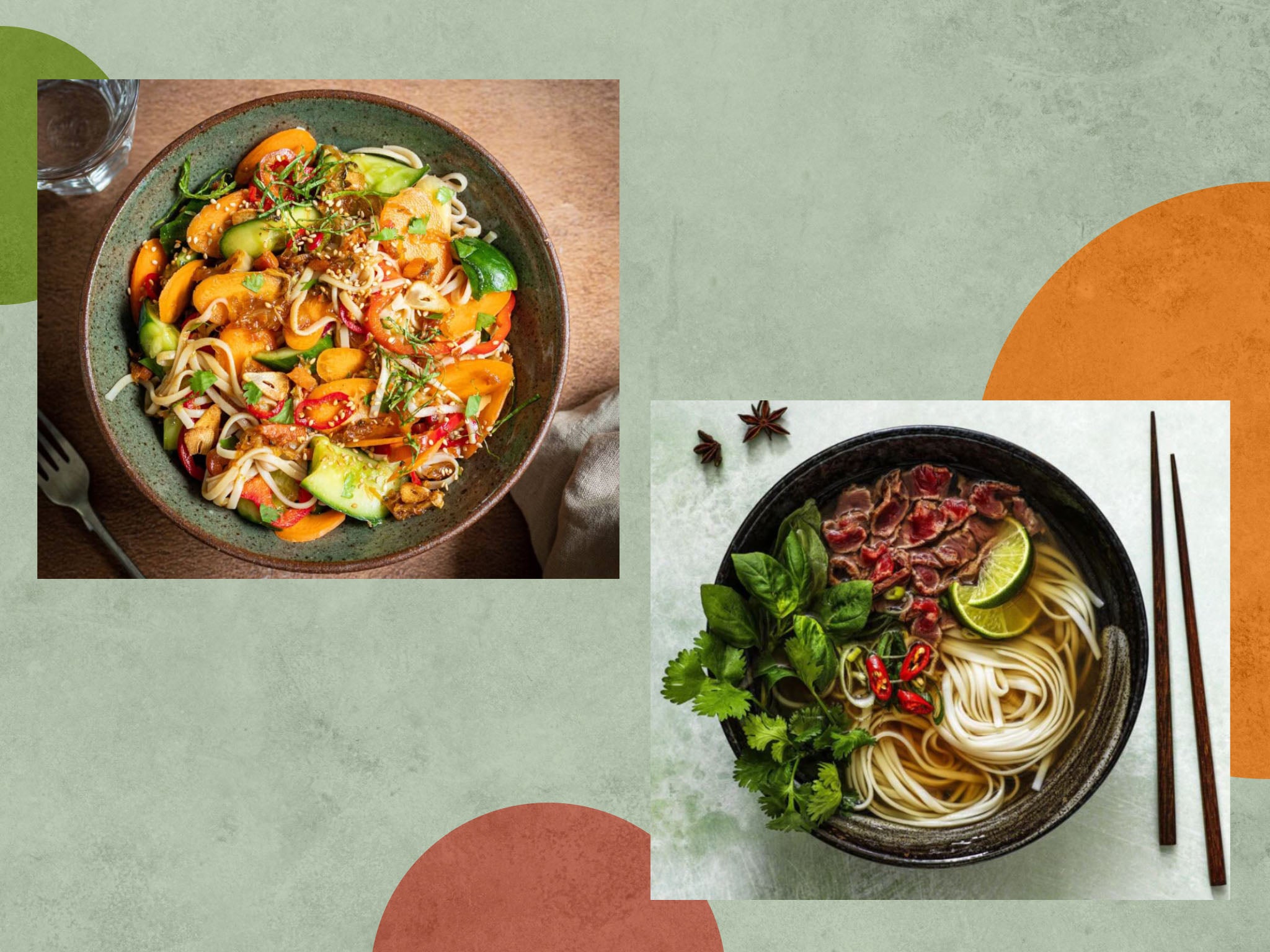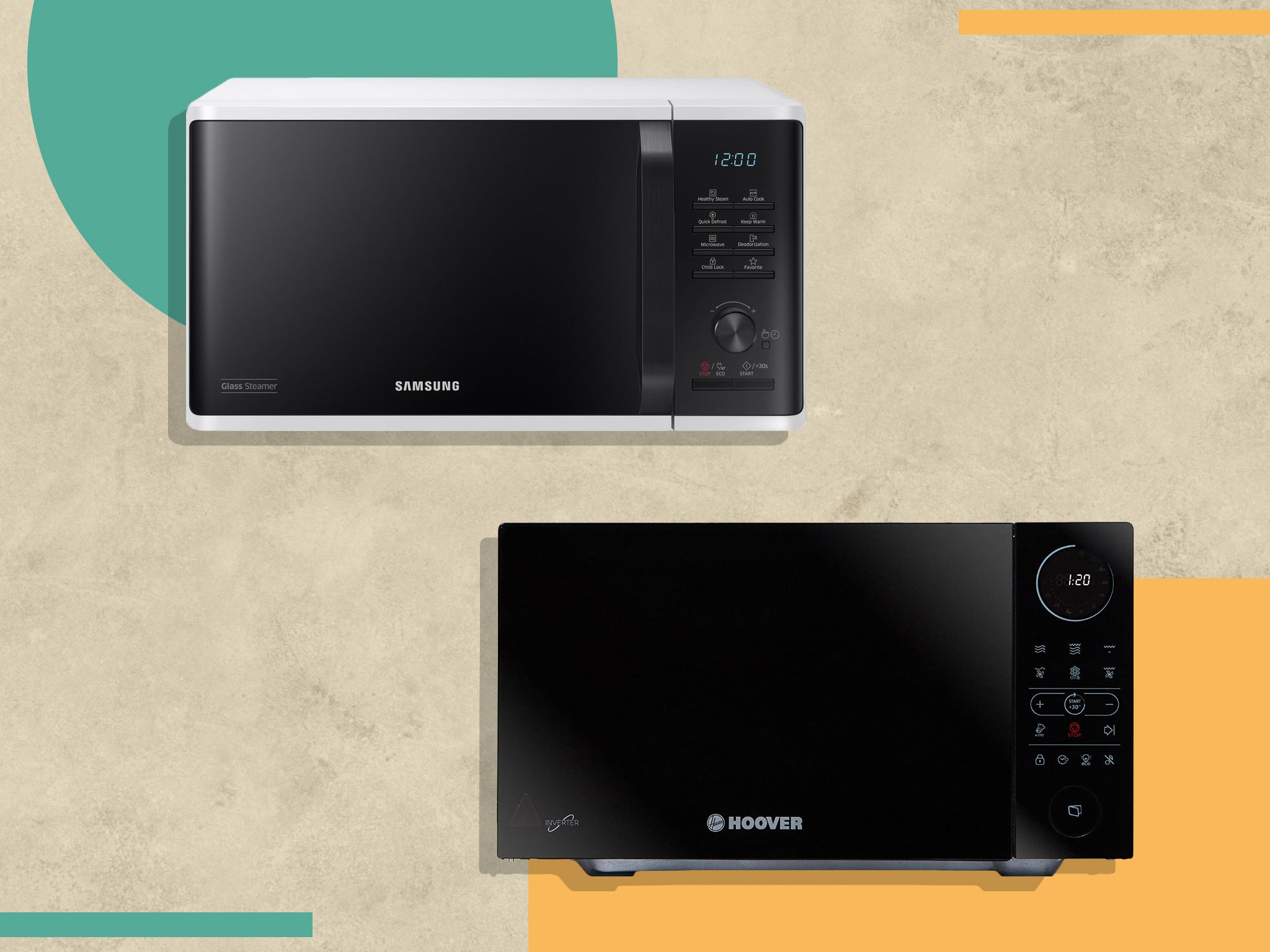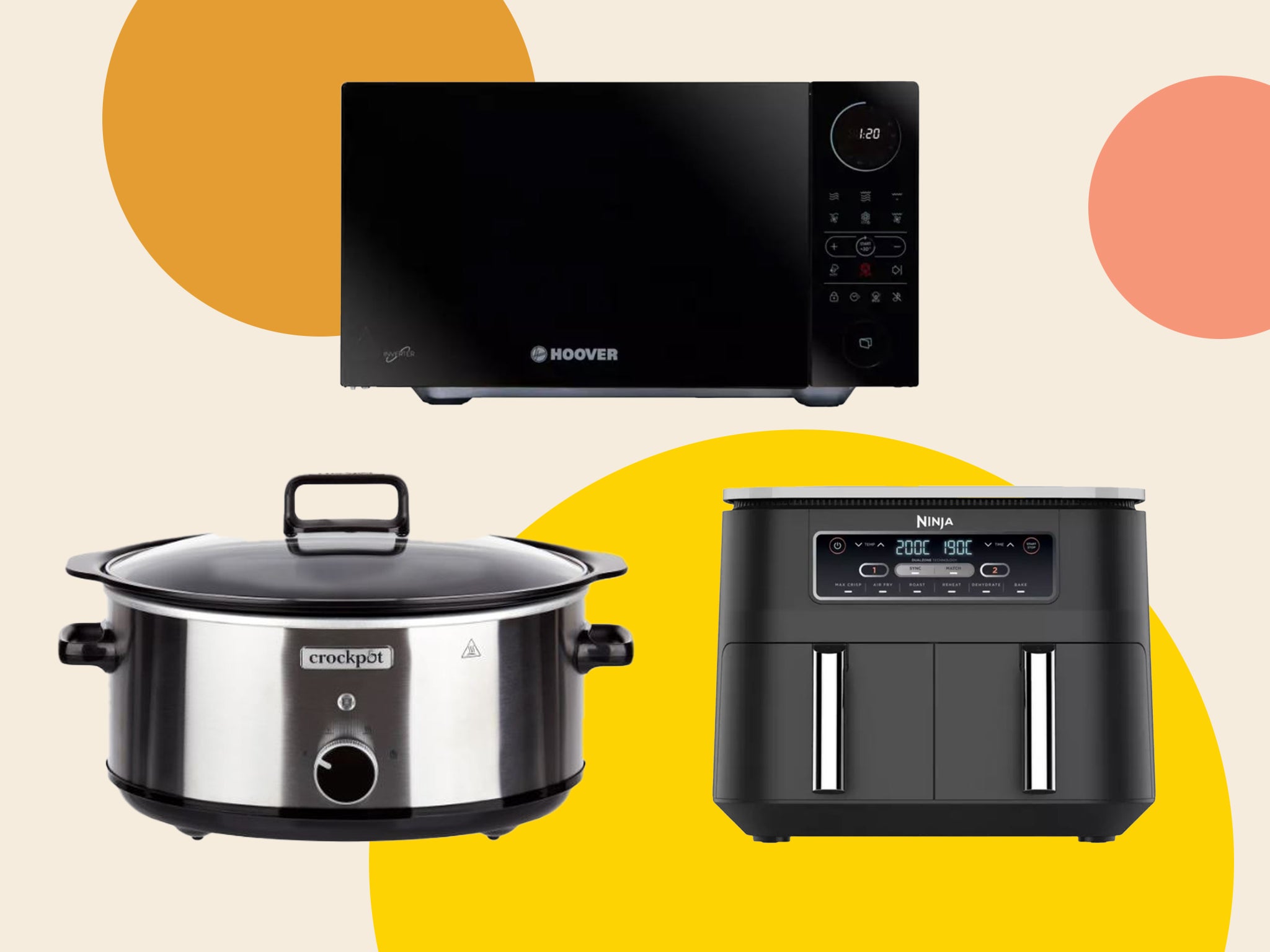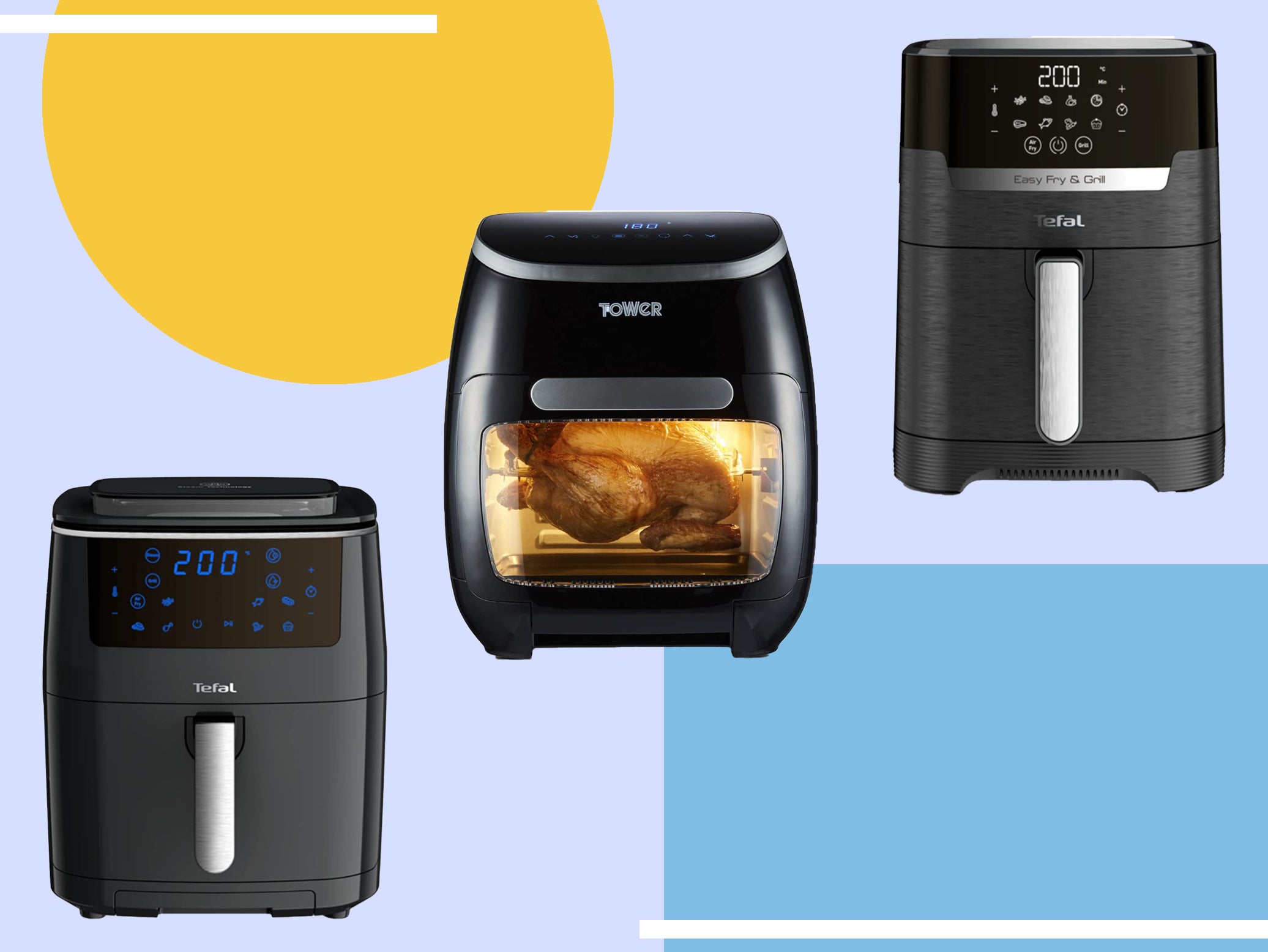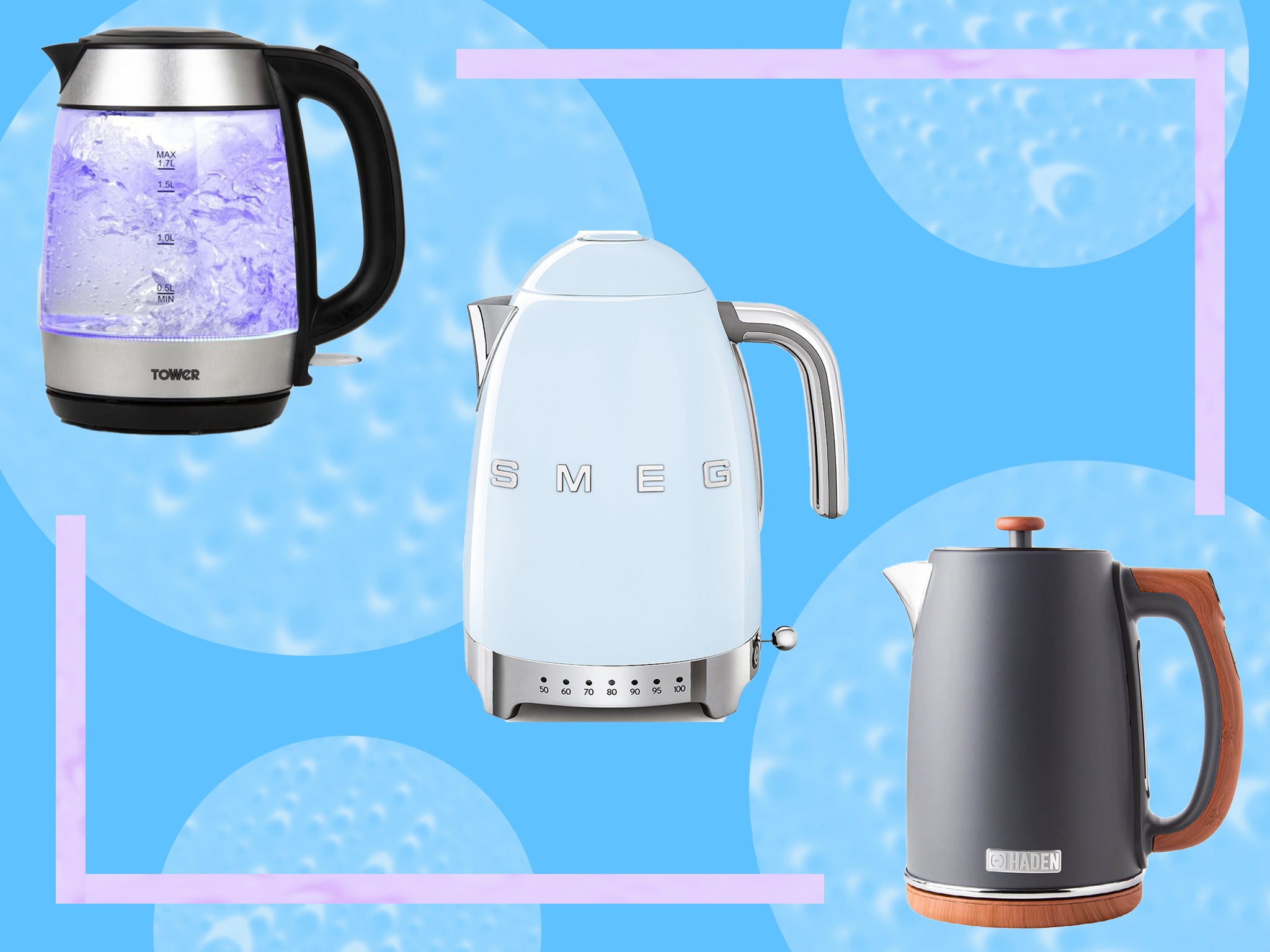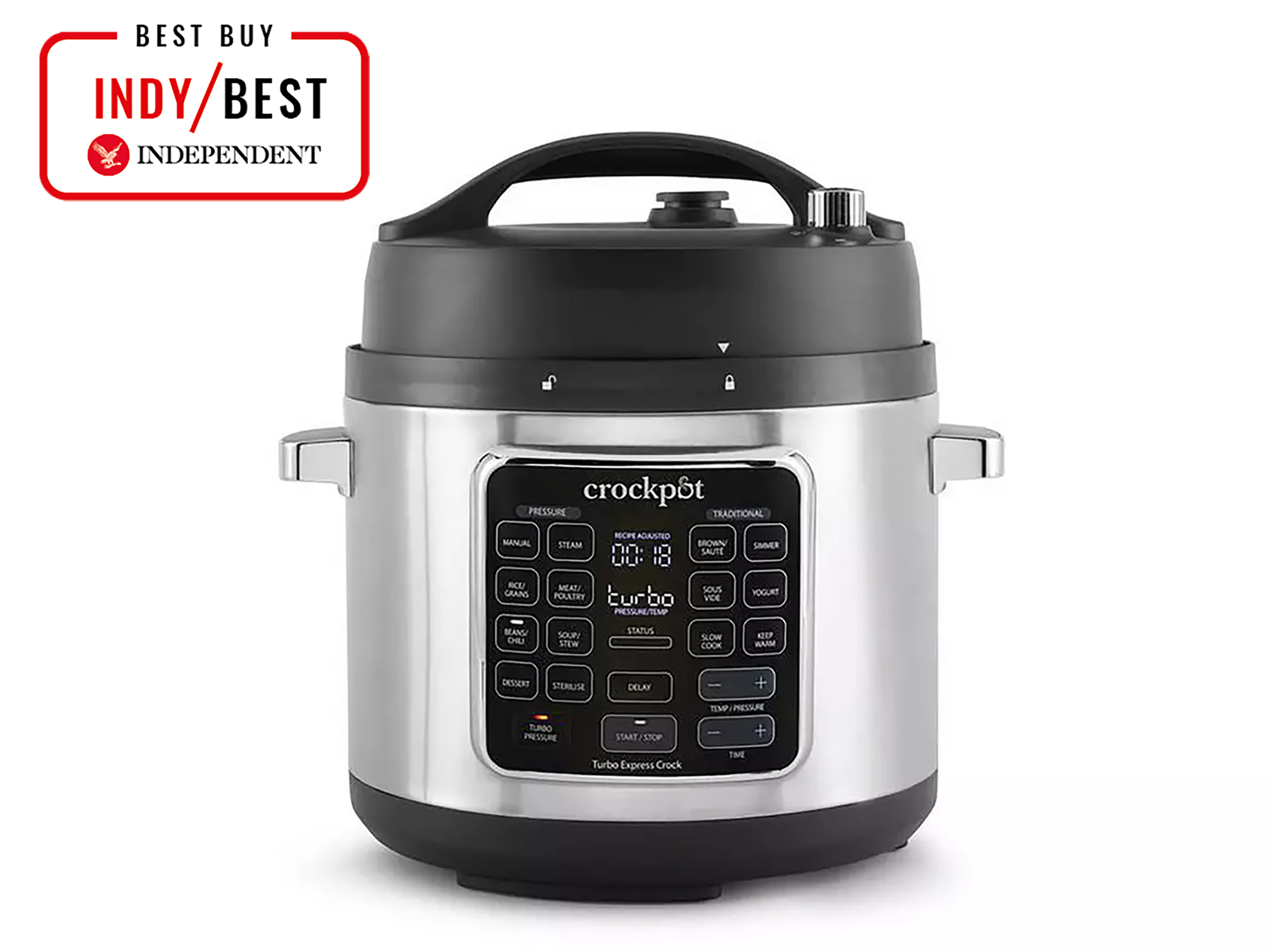
The Independent's journalism is supported by our readers. When you purchase through links on our site, we may earn commission. Why trust us?
7 best pressure cookers to get dinner on the table in a flash
Whether you’re a batch-cooker or a last-minute meal maker, these nifty appliances do it all
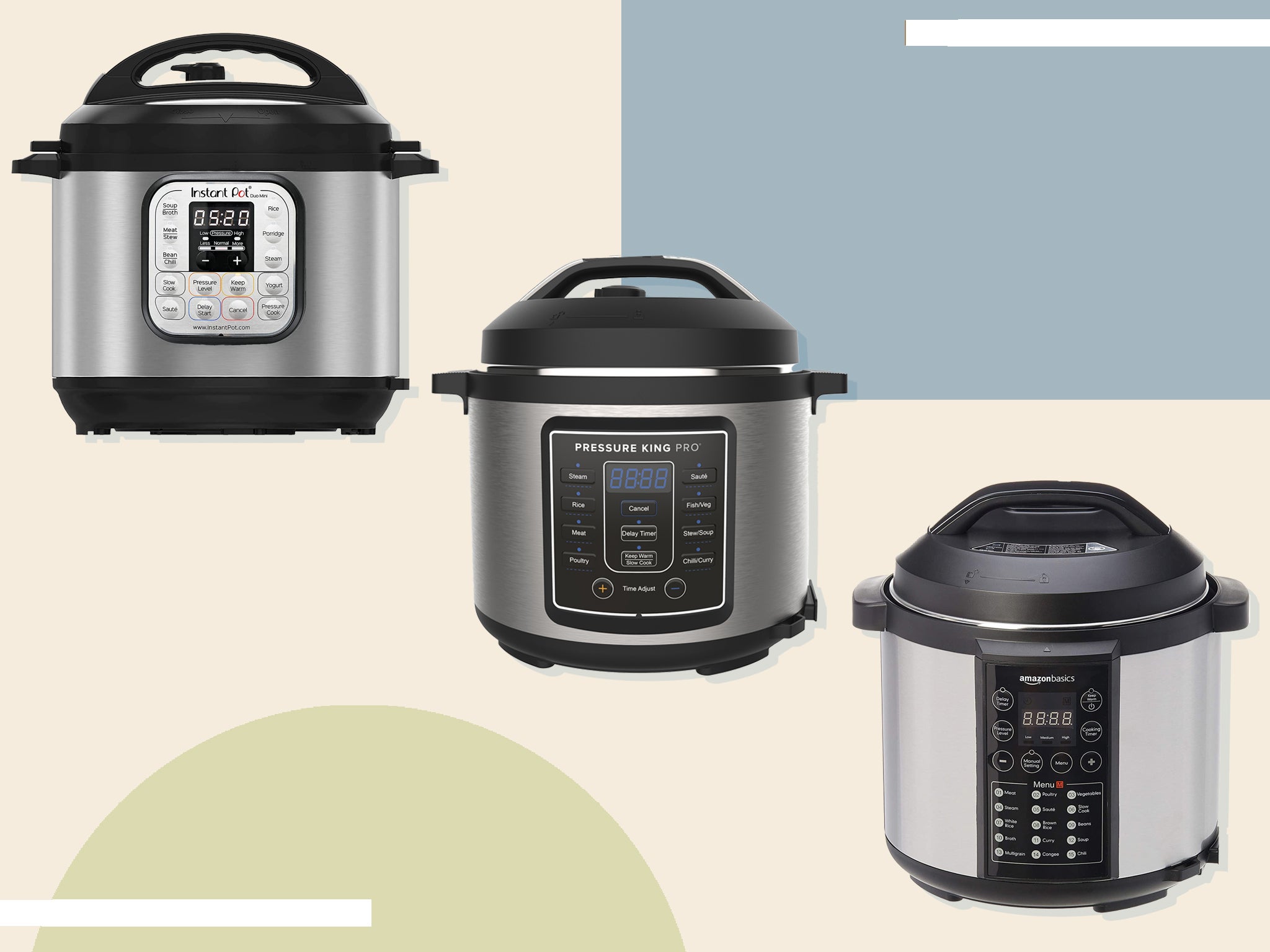

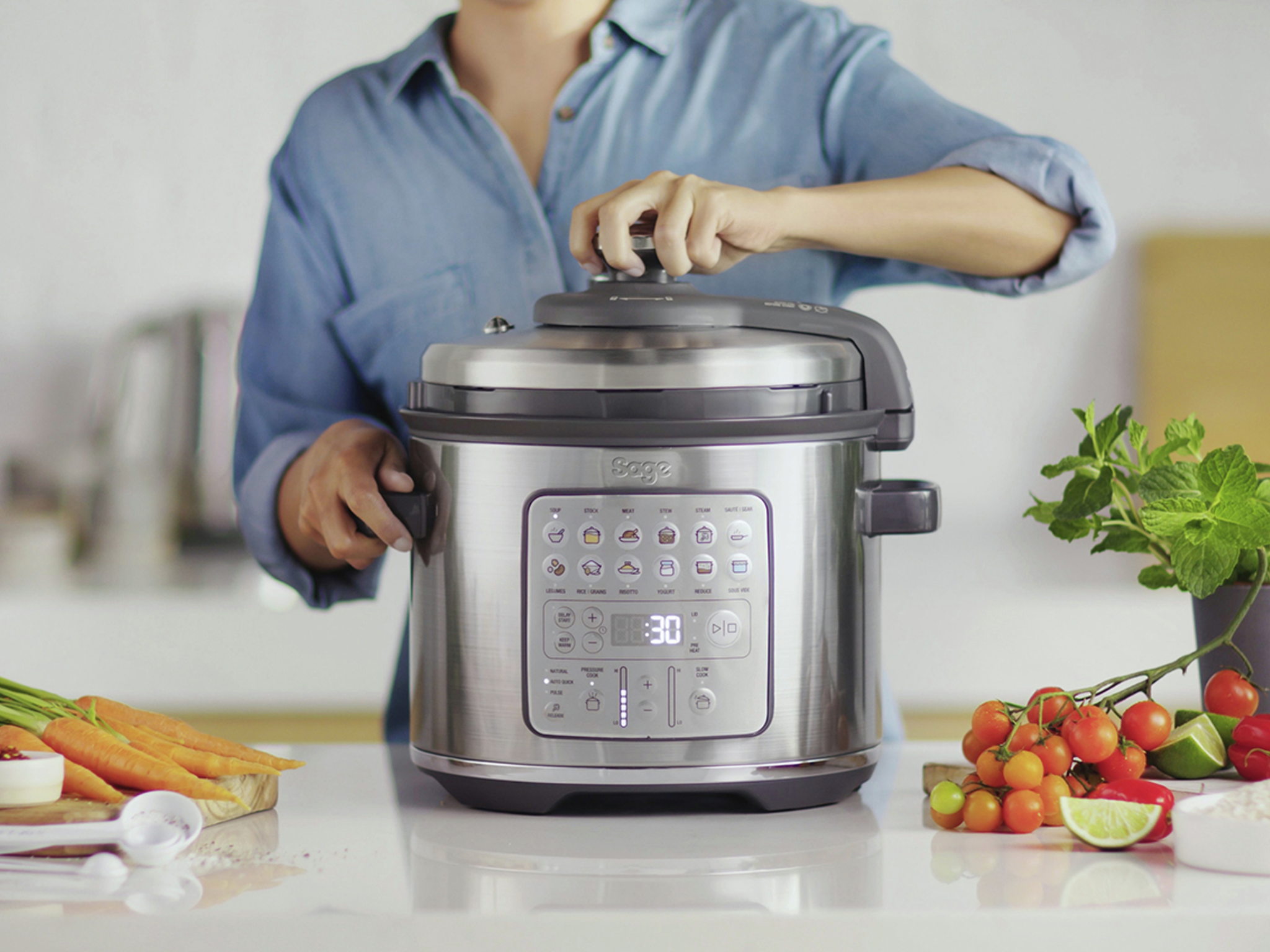

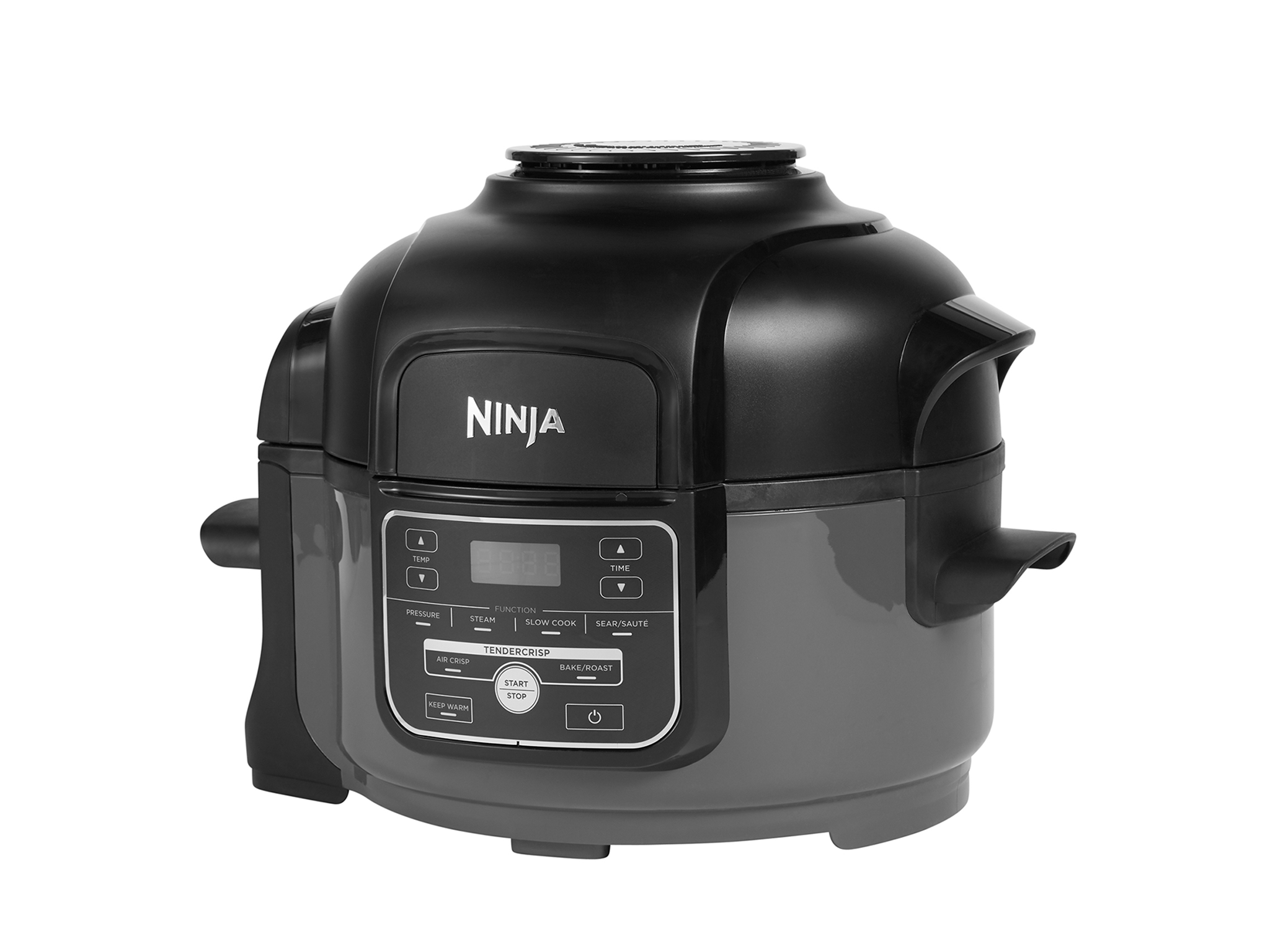
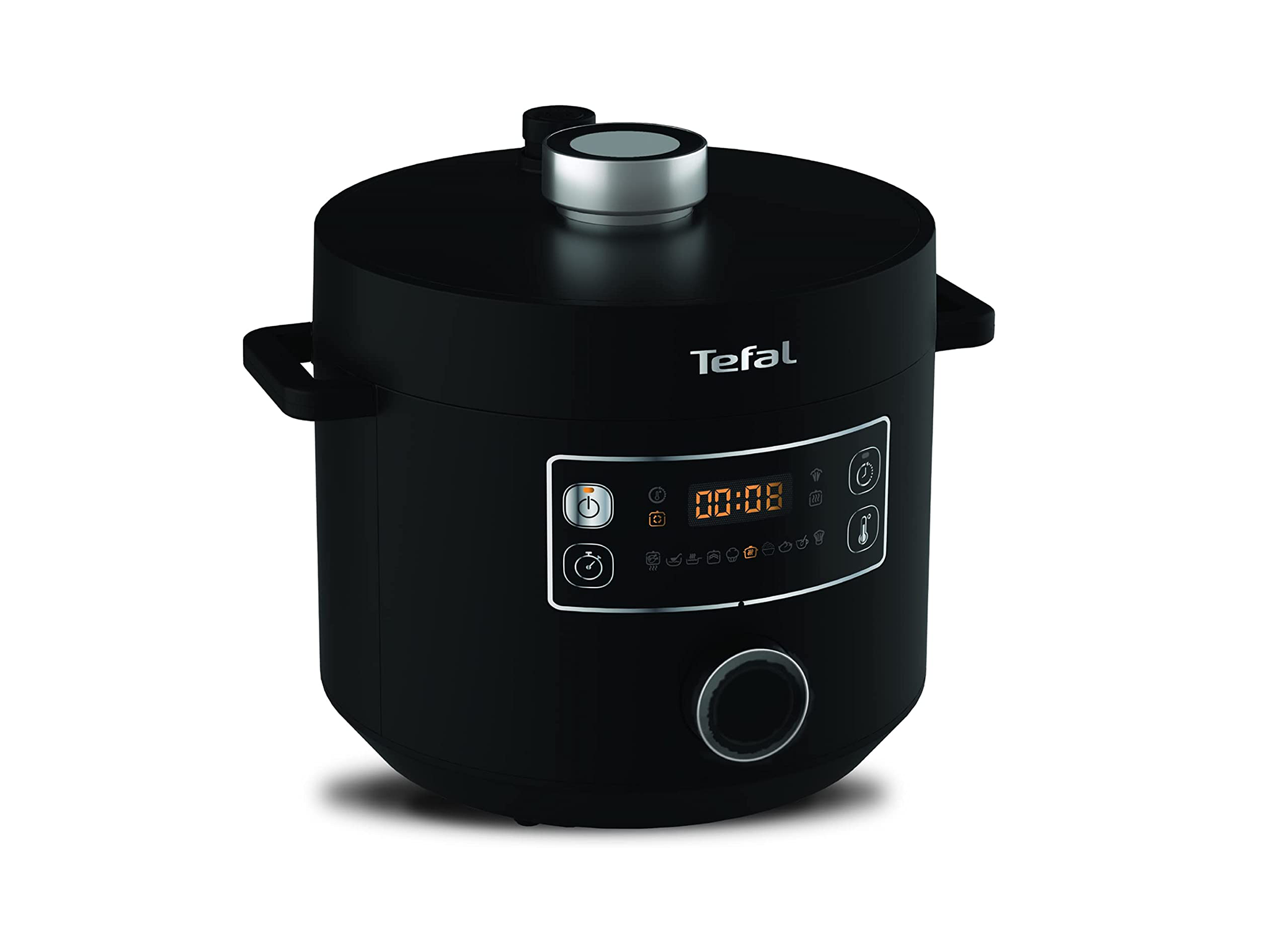
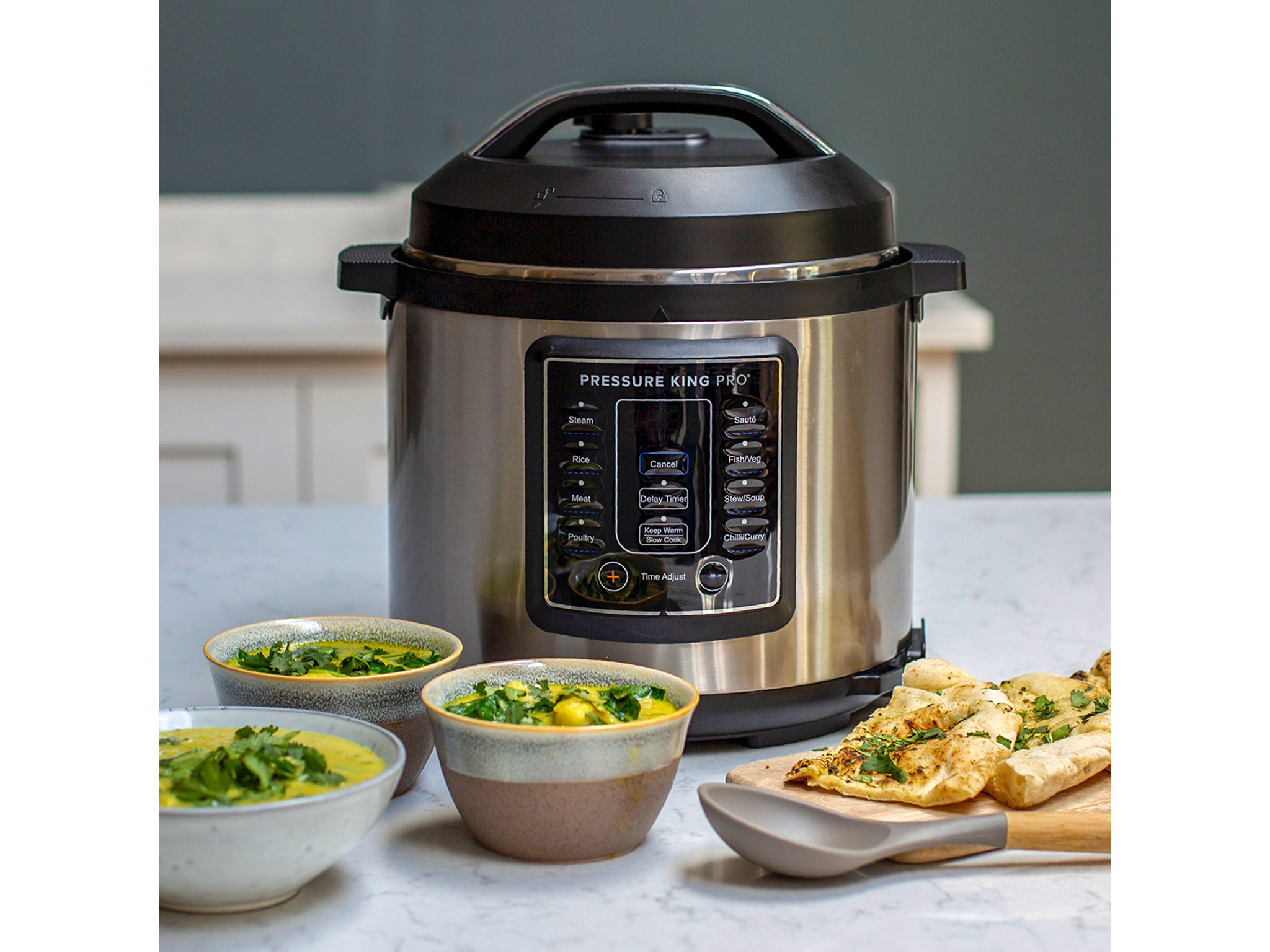
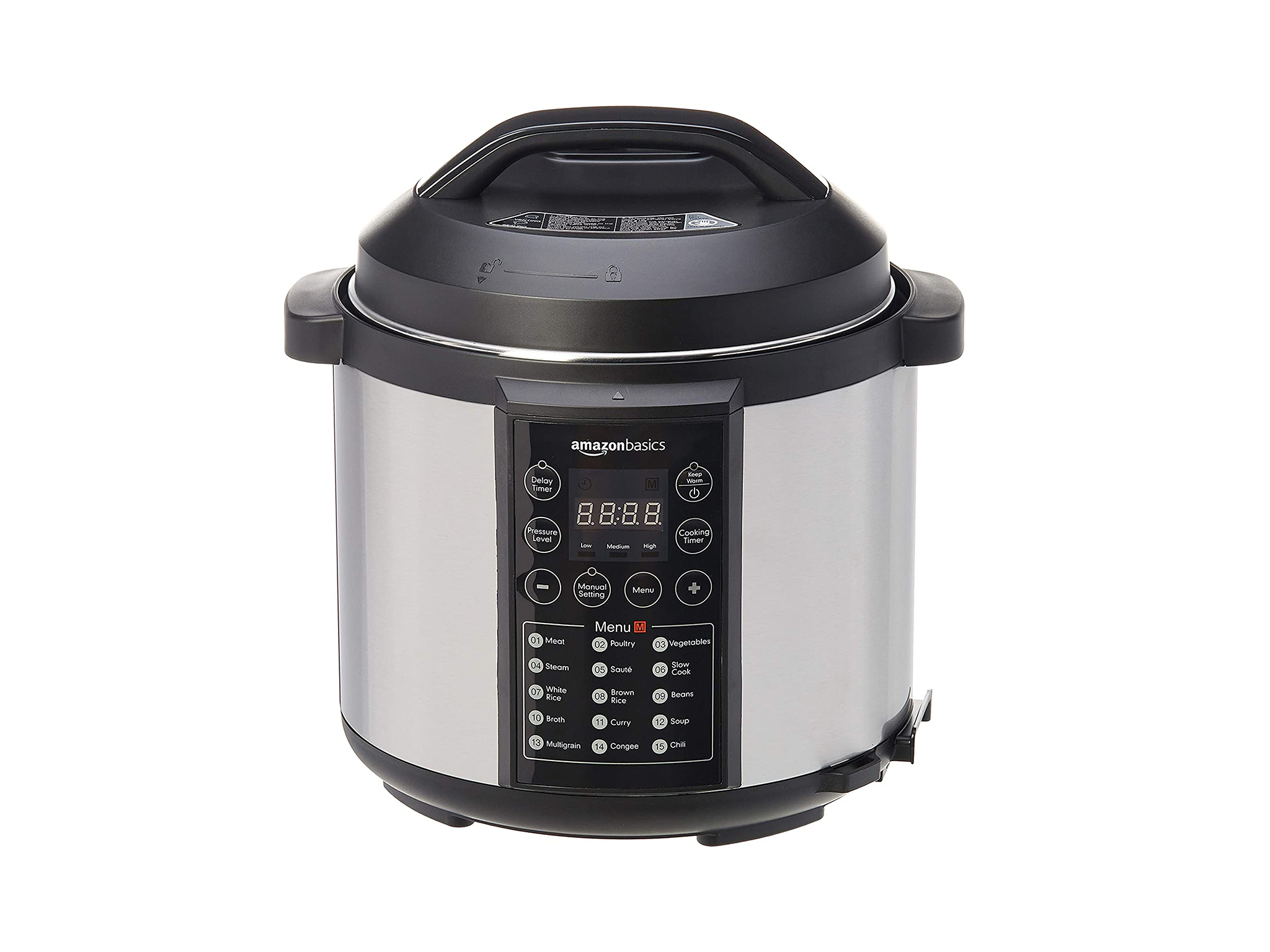 Best budget optionAmazon Basics 23 in 1 multi-purpose electric steamer, pressure cooker, 5.5lRead review£83
Best budget optionAmazon Basics 23 in 1 multi-purpose electric steamer, pressure cooker, 5.5lRead review£83
There’s no getting away from it, electric pressure cookers are big old lumps of kitchen kit that will hog space on your countertop and in your cupboard but they more than justify their place. Cooking under pressure takes a fraction of the time oven or hob cooking requires meaning you can knock up a stew when you come home late from work and use less energy too.
These multi-cookers often double as slow cookers and steamers and can effectively replace a rice cooker too. The sous vide setting on some models means the cooker can also act as a temperature-controlled water bath for precise cooking in vacuum-sealed bags. While others also include an air fryer.
However, when it comes to actually purchasing a pressure cooker, the amount of choice can be daunting. There are many factors to consider when deciding which one will be best for you, but the main thing to look at is capacity. For a large family or batch cooking, we’d suggest that a 5.7l-6l model is about right. However for just one or two people a 4.7l model will be more than roomy enough to whip up meals in a flash.
After that you may want to consider functionality, controllability and at what level of pressure the cooker operates. Do you need all the bells and whistles? Are you happy to just press a preset button and let the cooker do its thing? Or do you want to be able to adjust the level of pressure and cooking time to suit particular recipes? It’s all up to you and how often you cook.
Let’s also not forget that the higher the pounds per square inch (PSI) number the better for efficiency and flavour, which is partly why the models we tested ranged from 7-15PSI. And we can promise that all produced great results.
How we tested
We really put these cookers through their paces. We prepared a number of dishes including stews, chilli con carne, pasta dishes and risotto and also battled with rice and a variety of vegetables and pulses to see which models performed best overall. As well as assessing the flavour and texture of the food, we also considered the cooker’s functionality, ease of use, cleaning and storage and, most importantly, how much we enjoyed using them. Read on to see which ones could handle the pressure.
The best pressure cookers for 2022 are:
- Best overall pressure cooker – Crockpot turbo express: £100, Argos.co.uk
- Best pressure cooker for newbies – Sage fast slow go multi cooker: £169.95, Sageappliances.com
- Best pressure cooker for YouTube-friendly cooks – Instant Pot duo 5.7l 7- in-1 multi pressure cooker: £89.99, Instantbrands.co.uk
- Best pressure cooker with an air fryer – Ninja foodi mini 6-in-1 4.7l multi-cooker: £170, Argos.co.uk
- Best pressure cooker for when in a hurry – Tefal turbo cuisine: £129.99, Tefal.co.uk
- Best pressure cooker for a family – Pressure King pro 14-IN-1 multi cooker: £89.99, Highstreettv.com
- Best budget pressure cooker – Amazon Basics 23 in 1 multi-purpose electric steamer, pressure cooker, 5.5l: £83, Amazon.co.uk
Crockpot turbo express

- Best: Overall
- Capacity: 5.6l
- Dimensions: 34cm x 34.4cm x 30.8cm
- Number of programmes: 14
- Includes: Stirring spoon, steaming rack and sous vide rack
- Weight: 6.04kg
The Crockpot turbo express is so versatile that we half expected it to do the washing up for us. And with 14 shortcut buttons, divided into pressure and traditional for everything from steaming and sterilising to slow cooking and sauteing, we found the cooker supremely easy to use.
It comes with a well-written and easy-to-follow instruction manual to help you get started – our only criticism of that would be that the suggested rice recipe didn’t work, but we did manage to produce perfect rice after a few tweaks – and helped us make everything from perflectly tender poached duck legs to a beautifully clear and full-flavoured chicken stock.
We really liked the delay feature that allows the start time of a cooking programme to be deferred for up to four hours, so dishes can be prepared ahead and ready to serve at just the right time. However, the ace up the cooker’s sleeve is the turbo feature. At the push of a button, it raises the pressure from the cooker’s usual 10PSI to between 13-15PSI (making it the most powerful cooker we reviewed) and reducing cooking times by 40 per cent, so that lentils for a batch of dhal were done in just one minute with no overnight soaking required.
The generous 5.6l capacity makes the turbo express perfect for a family but does mean that it’s a bit of a beast of a machine. At 34cm x 35cm it hogged the worktop and we had to clear out a cupboard to store the cooker, but its performance outstripped these minor downsides making it our all-round best buy.
Sage fast slow go multi cooker

- Best: For newbies
- Capacity: 6l
- Dimensions: 31.3cm x 34.7cm x 33.3cm
- Number of programmes: 14
- Includes: Trivet and free downloadable recipe book
- Weight: 5.5kg
The fast slow go is the more affordable and simplified cousin to Sage’s fast slow pro cooker (£199.95, Sageappliances.com). The main difference between them is that, the fast slow go’s array of shortcut buttons allow easy access to settings for everything from making soup to cooking sous vide as well as a manual setting for when you become more familiar with the cooker.
Aided by the well-written and detailed instruction manual and free-to-download recipe book, we found the cooker controls easy to navigate and achieved great results straight off the bat. We were impressed by the “legumes” setting that produced perfectly tender marrowfat peas from dry without the need for an overnight soak. The chicken and mushroom risotto recipe worked a treat too, although we did miss some of the creaminess that you can only get from constant stirring on the hob.
We were soon confident enough to try our own recipes though, including a chilli con carne using the slow cooker setting that was deeply flavoured and the perfect consistency. We didn’t even need to use the recommended “reduce” setting that slow-cooked food sometimes needs to boil off the retained excess liquid.
On the downside, standing at 33cm high and 31cm wide, the fast slow go took up a lot of space on our worktop. We also didn’t love the hinged lid, a fully removable one would have made the cooking bowl more accessible (the lid however does unscrew for cleaning and is dishwasher safe). But if you’ve got the space, the fast slow go is versatile, easy to use and clean and delivers uniformly excellent results.
Instant Pot duo 5.7l 7- in-1 multi pressure cooker

- Best: For YouTube-friendly cooks
- Capacity: 5.7l
- Dimensions: 34cm × 31cm × 31.7 cm
- Number of programmes: 13 programmes
- Included: Steamer rack
- Weight: 5.4kg
Instant Pot is the iPhone of the multi-cooker world, with record-breaking sales and a cult following of millions for Instant Pot-related social media accounts. As a result there’s a huge amount of recipes and how-to videos online for the cooker, which is handy as the included instructions are less than comprehensive. We recommend you refer to the online version of the product manual for full instructions, as the printed version included in the box misses out some important information.
But, after a little research, we found the cooker’s controls intuitive and were soon happily using the “sear” setting to brown off chicken bone and vegetables before using the cooker’s “stew” pressure cooking setting to make a full-flavoured stock, and cooked light and fluffy rice, once we’d found the right recipe. Plus, the 5.7l, three-ply stainless steel cooking bowl was roomy enough for family-sized recipes and was easy to clean, even when a batch of porridge caught on the bottom (it nevertheless tasted great and we later discovered that the recommended cooking method for porridge is to use a heat-proof bowl placed inside the cooking bowl and placed on the provided trivet).
With settings for slow cooking, steaming, yoghurt making and keeping food warm, the Instant Pot, with its affordable price point and solid construction more than justifies its place in the kitchen.
Ninja foodi mini 6-in-1 4.7l multi-cooker

- Best: Cooker with an air fryer
- Capacity: 4.7l
- Dimensions: 32cm x 35cm x 38 cm
- Number of programmes: 6
- Included: Separate pressure-cooking lid, cook and crisp plate for air frying , steaming rack
- Weight: 9.07kg
“Mini” is a slightly misleading description of this multi-cooker as, although it has one of the smallest capacities of all the models we reviewed, it took up roughly the same amount of space on our worktop. But we won’t hold that against it as there wasn’t much we didn’t love about the Ninja foodi mini.
The 4.7l capacity was plenty to cook a beef stew for four people (with leftovers) with the meat browned to perfection using the adjustable sear function. Five settings from low to high mean you can gently sweat onions as well as quickly colour meat, and we also used the high setting to reduce some red wine for the stew before popping on the lid and cooking under pressure for just 25 minutes for a wonderfully tender result.
About that lid, the Ninja foodi mini comes with two of them, a separate removable one for pressure cooking and a hinged “crisping” lid for use when air-frying. Although that’s an additional storage headache (the pressure cooker lid is as bulky as you would expect), it’s one worth solving to have the additional functionality. We were delighted with some homemade air fried fish cakes that were cooked in 12 minutes with just a brush of oil and were beautifully crisp.
The commonly found “rice” or “stew” settings were absent on the Ninja food mini but we didn’t miss them at all. In fact, we found that cooking from the included recipe booklet – which features an exhaustive set of charts for each of the cooker’s six settings (pressure cook, air fry, slow cook, steam, bake/roast and sear/sauté) – straightforward and enjoyable. We would have loved a sous vide setting but given that you can do everything from roast a whole chicken to bake a loaf of bread in it, we really aren’t complaining.
Tefal turbo cuisine

- Best: When in a hurry
- Capacity: 4.8l
- Dimensions: 31cm x 33.6cm x 28.7cm
- Number of programmes: 10
- Included: spoon and spatula, dishwasher safe ‘spherical’ cooking bowl , free recipe app
- Weight: 4.7kg
The black exterior and minimalist design set of the Tefal turbo cuisine really sets it apart from its peers. There’s an illuminated control panel with four embedded buttons, an LED display, a chunky dial on the front to select from the 10 cooking functions, and a similarly chunky handle on the lid that also encompasses the pressure release button and, that’s it. It’s as easy on the eye as it is simple to use.
We liked the lightweight cauldron-like “spherical” bowl as it was very easy to hand wash. Cooking rice was also a breeze using the provided cup measure – the cooker also comes with a plastic ladle, spatula and steam basket – and a large and easy-to-read scale printed on the internal wall of the bowl that indicated the amount of water required per cup. It was then just a matter of dialling up the rice programme and pressing start. And the result was pleasingly light and fluffy.
Using the “brown” programme, we achieved a good colour on some meatballs which we then pressure cooked in a matter of minutes in a tomato sauce on the “stew” setting. Despite the manufacturer’s claim that the bowl’s design allows for “360-degree heat circulation for juicier and more tender results”, we didn’t notice that the food we cooked in the Tefal was noticeably better compared to the other cookers we tested.
If we’re being picky, we would have preferred more control over the heat in the manual setting which only allowed for increments of 10C between 80C and 150C and the mains cable was a little on the short side. But those minor niggles aside, this medium-sized cooker would be perfect for any couple or small family.
Pressure King pro 14-IN-1 multi cooker

- Best: For a family
- Capacity: 5.7l
- Dimensions: 32.6cm x 31cm x 32.6cm
- Number of programmes: 14
- Included: Steamer basket
- Weight: 5.06kg
If you’re looking for a good value pressure cooker/slow cooker/rice cooker/steamer without too many bells and whistles, then the Pressure King pro might be just what you’re looking for. With a 5.7l capacity, it’s the perfect size for families or batch cooking. With eight pre-set pressure cooking settings for rice, meat, poultry, fish and veg stew/soup, chilli/curry (and a further six for non-pressure cooking) it’s simple to use, especially with the free downloadable app and online instruction videos.
At about 7PSI, the Pressure King pro cooks at the lowest pressure of all the cookers we tested but that didn’t prevent it from delivering some impressive results. Using the option of adjusting the cooking times of the preset programs in increments of one minute, we were able to produce fluffy rice, tender chickpeas (with no overnight soaking) and perfectly tender boiled new potatoes in minutes.
The Pressure King Pro might lack a little of the versatility of some of the other multi-cookers we reviewed, but its affordable price point makes it an attractive option for the more casual cook.
Amazon Basics 23 in 1 multi-purpose electric steamer, pressure cooker, 5.5l

- Best: Budget option
- Capacity: 5.5l
- Dimensions: 30.99cm x 30.48cm x 32 cm
- Number of programmes: 15
- Included: Automatic keep warm
- Weight: 2.36kg
The name of this cooker had us scratching our heads as 23 different applications in one pot is a lot, but it turns out that the number is derived from the eight-button control panel plus the 15 cooking functions it has access to. In reality, you have a pressure cooker, slow cooker and steamer which can also take the place of a rice cooker and soup maker and that also has a sauté setting for frying. That’s still a very decent amount of functionality, especially for the price point.
The 5.5l capacity makes it family friendly and easy to use once you get the hang of the controls. Unfortunately, the instruction manual is badly written, difficult to follow and lacks detail, especially in terms of the duration and pressure level of each of the preset cooking functions which include meat, poultry, vegetables, chilli and even congee. The only way to discover them is to select the function and wait until the cooker comes up to pressure, after which the time and pressure level are displayed.
Annoyingly, this sometimes meant we found that they were not always appropriate for what we wanted to cook and the cooker only allowed for very limited variation on the set program (between 2 and 24 hours in increments of 10 minutes). So, more often than not, we used the manual setting which allowed for up to one hour in increments of one minute at low, medium or high pressure, which is flexible enough to cover most eventualities.
The slow cooker setting is not adjustable however and defaults to eight hours at a set temperature that can’t be changed, so you may need some trial and error to get perfect results.
Pressure cooker FAQs
Electric pressure cookers: Features to consider
First, consider capacity. Anything smaller than five litres is too teeny to suit more than a couple, so won’t work if you’re planning on batch cooking or hosting dinner parties. For maximum ease, look for a machine with pre-set programmes so you can throw in ingredients and just press a button to start cooking.
If you’d rather have a little more control, look for manual temperature control and quick pressure release, which works well when cooking delicate fish or vegetables, but should only be used with caution.
Dishwasher-safe parts, a keep warm setting and delayed start are all useful, while sauté capability will mean you can skip preparing ingredients on the hob first and save on the dreaded washing up.
What are the benefits of a pressure cooker?
Speed is everything. If you forget to think about dinner until half an hour before you want to eat it (just us?), a pressure cooker is the answer to your hungry prayers. Even cheaper cuts of meat, dried beans, casseroles and curries can be on the table in no time – usually taking only a third of the normal cooking time.
Quick cooking also saves money on your energy bills while sealing in vitamins and minerals to boost health content.
Buy a model that offers several functions including slow cooking, sous vide or even bread-making and you may even be able to streamline your kitchen down to just one multifunctional machine.
What are the disadvantages of pressure cooking?
Like to get dinner sorted first thing and forget it? While most pressure cookers can now be set to slow cook, there’s no point splashing out on functions you’ll never use. Pressure cookers can also take a little getting used to over a foolproof slow cooker. As food is ready so quickly, an extra minute or two can easily spoil a dish, especially as you can’t check food while it’s cooking or tweak the recipe if you forget to add seasoning.
What can you not cook in a pressure cooker?
Traditionally, delicate foods such as fish and seafood shouldn’t be prepared in a pressure cooker as they are better suited to tougher ingredients that usually take a long time to cook. Equally anything you prefer crispy or would normally fry won’t work well.
However, some models now come with specific sous vide or air-fry settings to handle even these ingredients, so be sure to choose a model with the right features for your needs.
The verdict: Pressure cookers
For versatility and ease of use, the Crockpot turbo express was hard to beat, and was priced very competitively too. It was also just an all-round pleasure to cook with and we were consistently delighted with the results. If you need an air fryer too, then we would highly recommend the Ninja foodi mini which performed extremely well.
Make life even easier in the kitchen with one of our top air fryers
Voucher Codes







